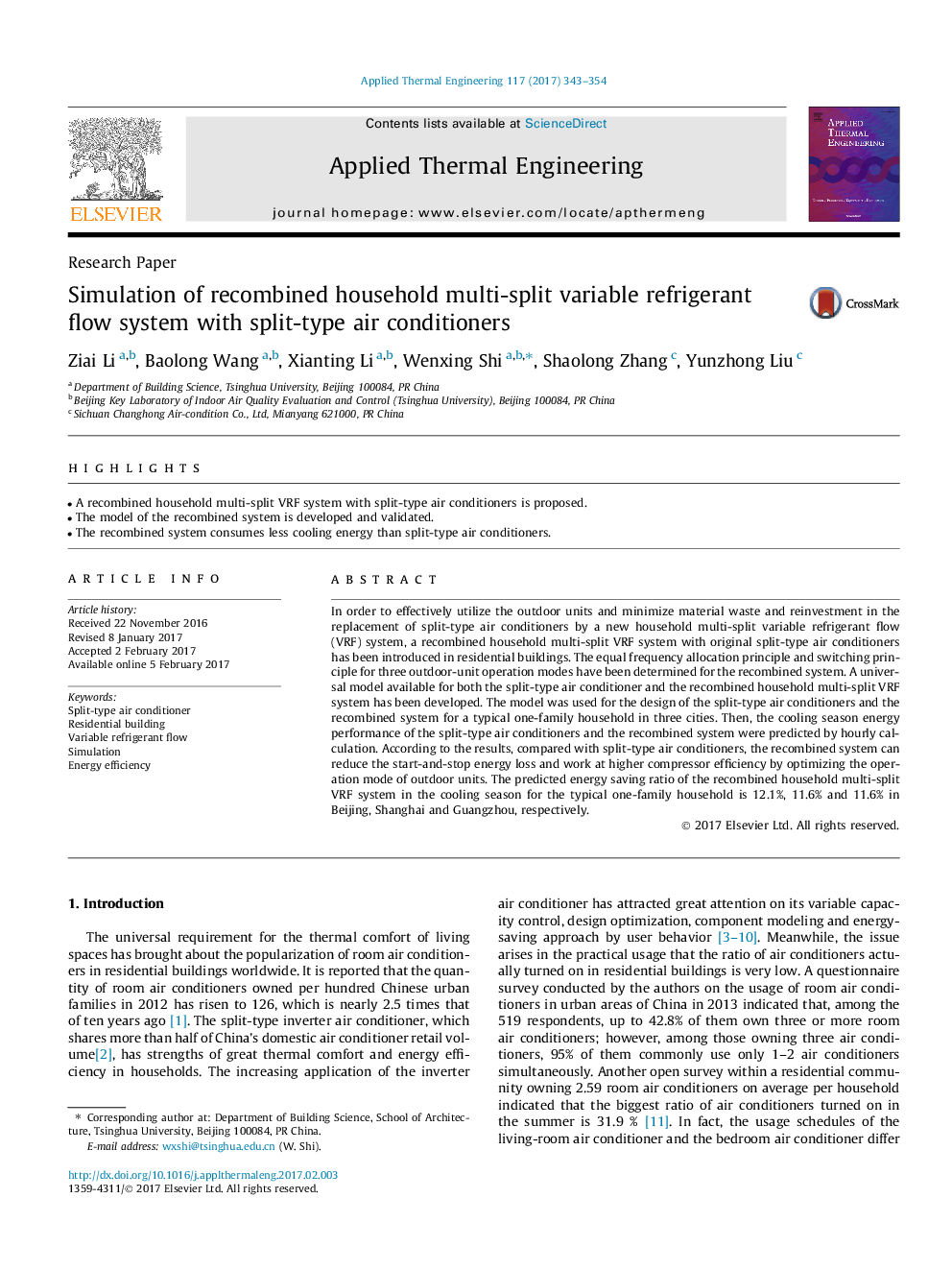| Article ID | Journal | Published Year | Pages | File Type |
|---|---|---|---|---|
| 4991525 | Applied Thermal Engineering | 2017 | 12 Pages |
Abstract
In order to effectively utilize the outdoor units and minimize material waste and reinvestment in the replacement of split-type air conditioners by a new household multi-split variable refrigerant flow (VRF) system, a recombined household multi-split VRF system with original split-type air conditioners has been introduced in residential buildings. The equal frequency allocation principle and switching principle for three outdoor-unit operation modes have been determined for the recombined system. A universal model available for both the split-type air conditioner and the recombined household multi-split VRF system has been developed. The model was used for the design of the split-type air conditioners and the recombined system for a typical one-family household in three cities. Then, the cooling season energy performance of the split-type air conditioners and the recombined system were predicted by hourly calculation. According to the results, compared with split-type air conditioners, the recombined system can reduce the start-and-stop energy loss and work at higher compressor efficiency by optimizing the operation mode of outdoor units. The predicted energy saving ratio of the recombined household multi-split VRF system in the cooling season for the typical one-family household is 12.1%, 11.6% and 11.6% in Beijing, Shanghai and Guangzhou, respectively.
Keywords
Related Topics
Physical Sciences and Engineering
Chemical Engineering
Fluid Flow and Transfer Processes
Authors
Ziai Li, Baolong Wang, Xianting Li, Wenxing Shi, Shaolong Zhang, Yunzhong Liu,
